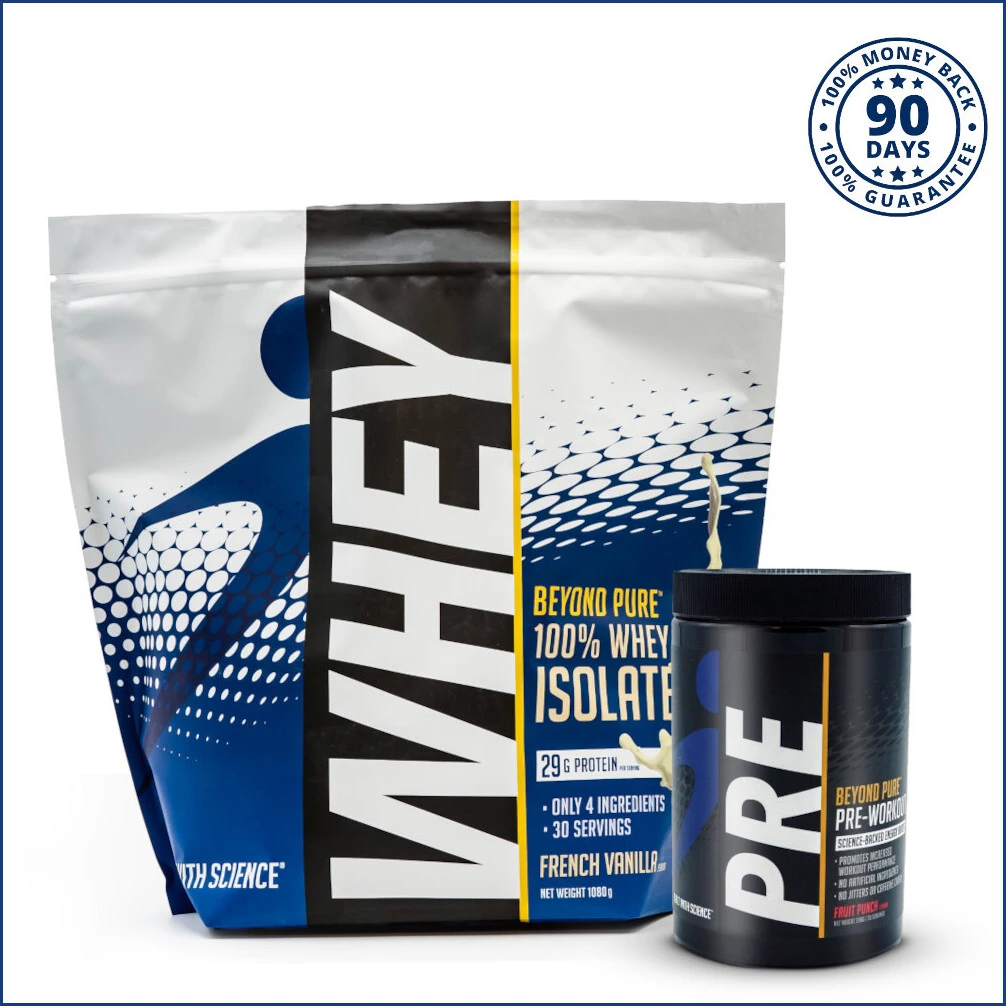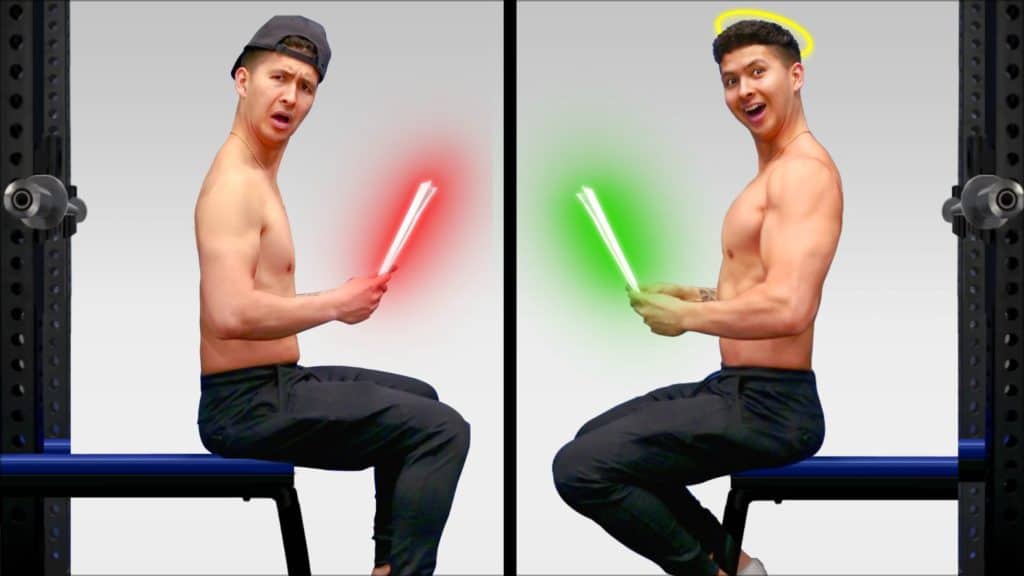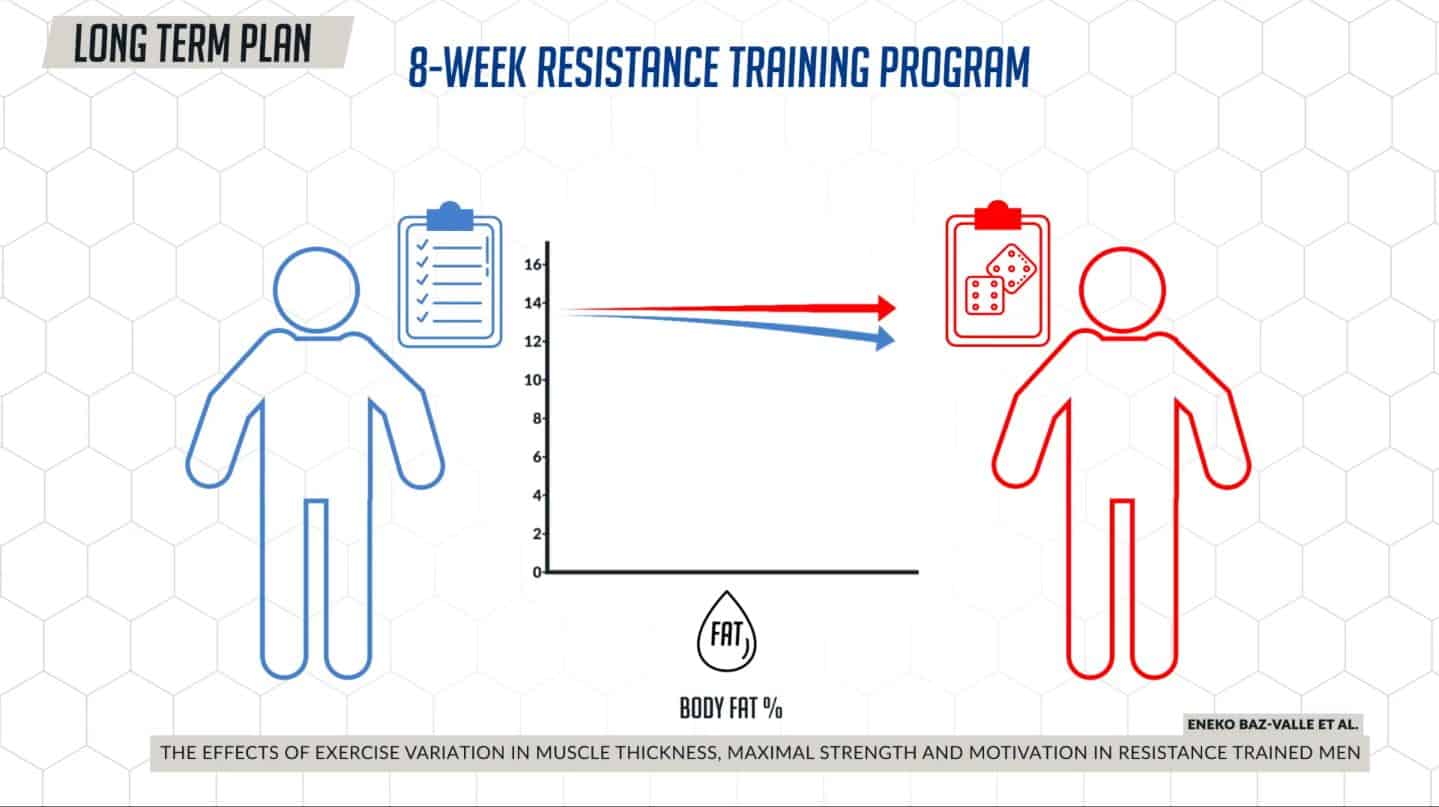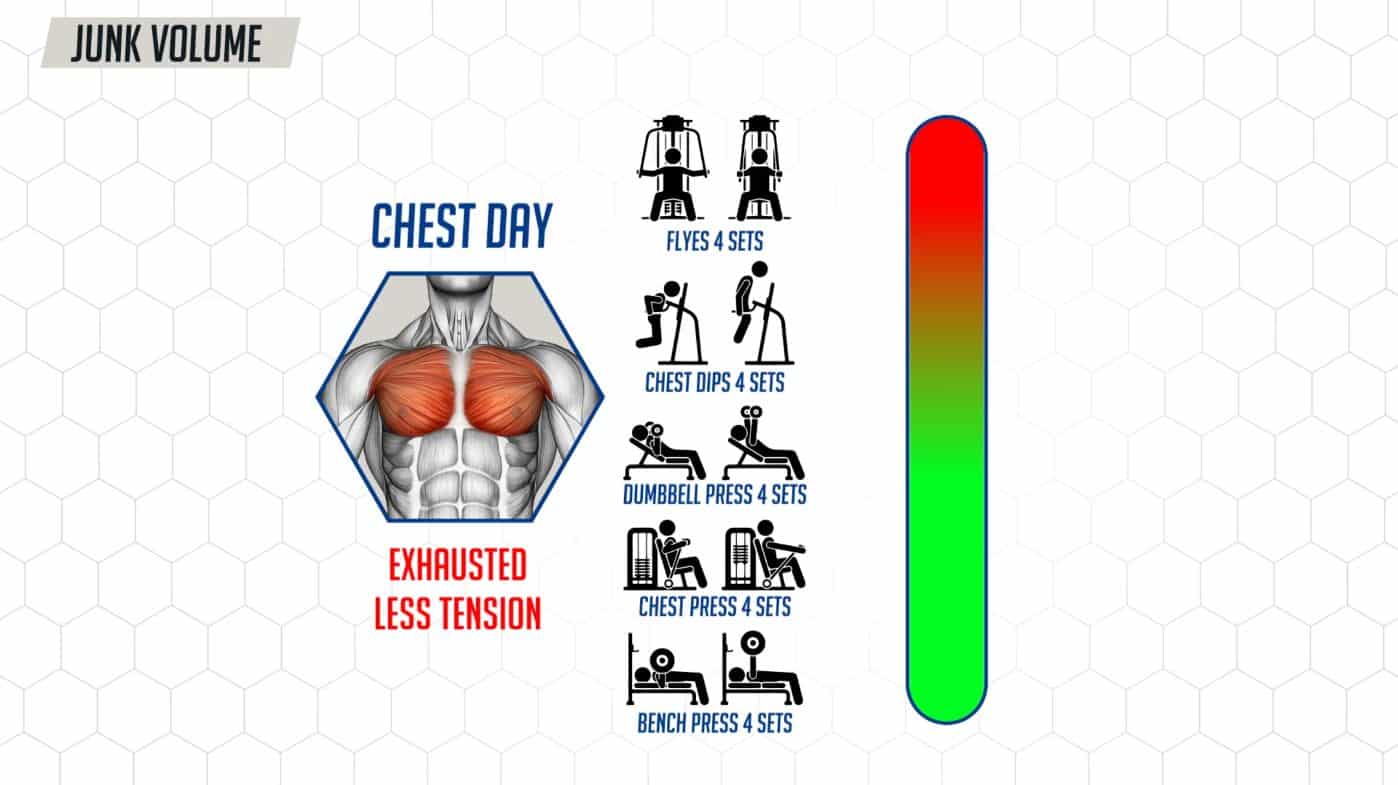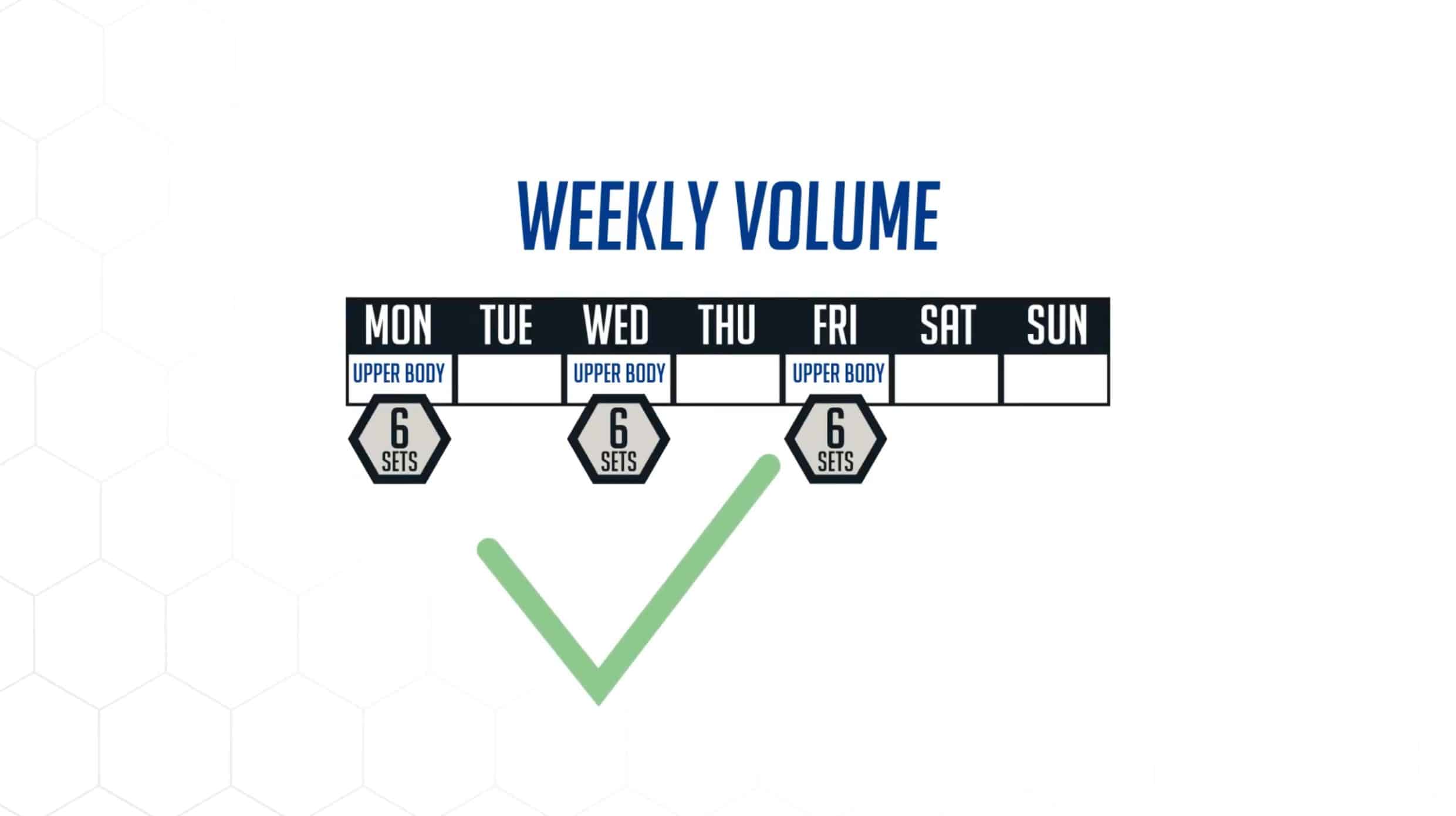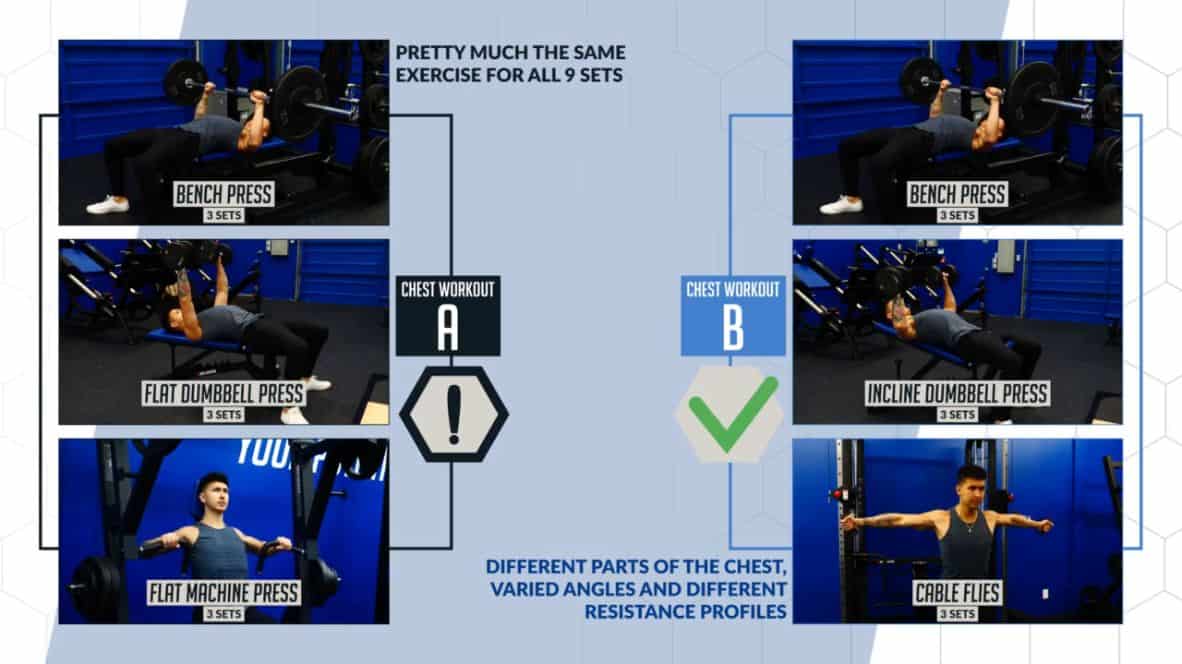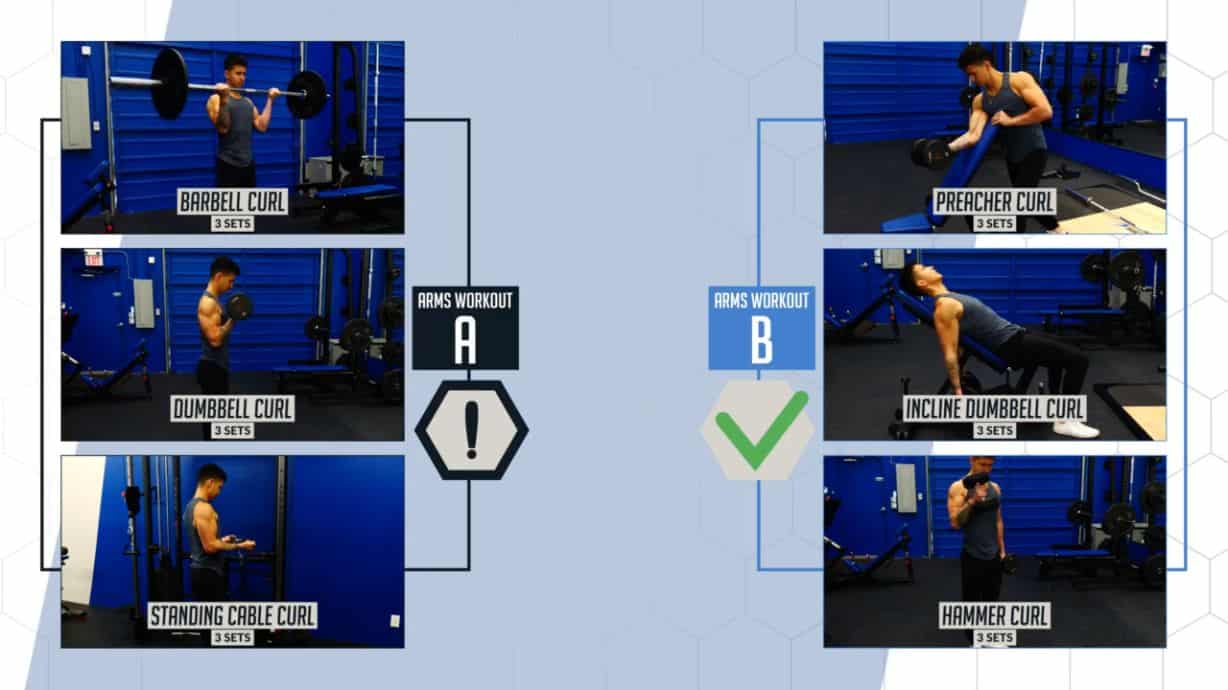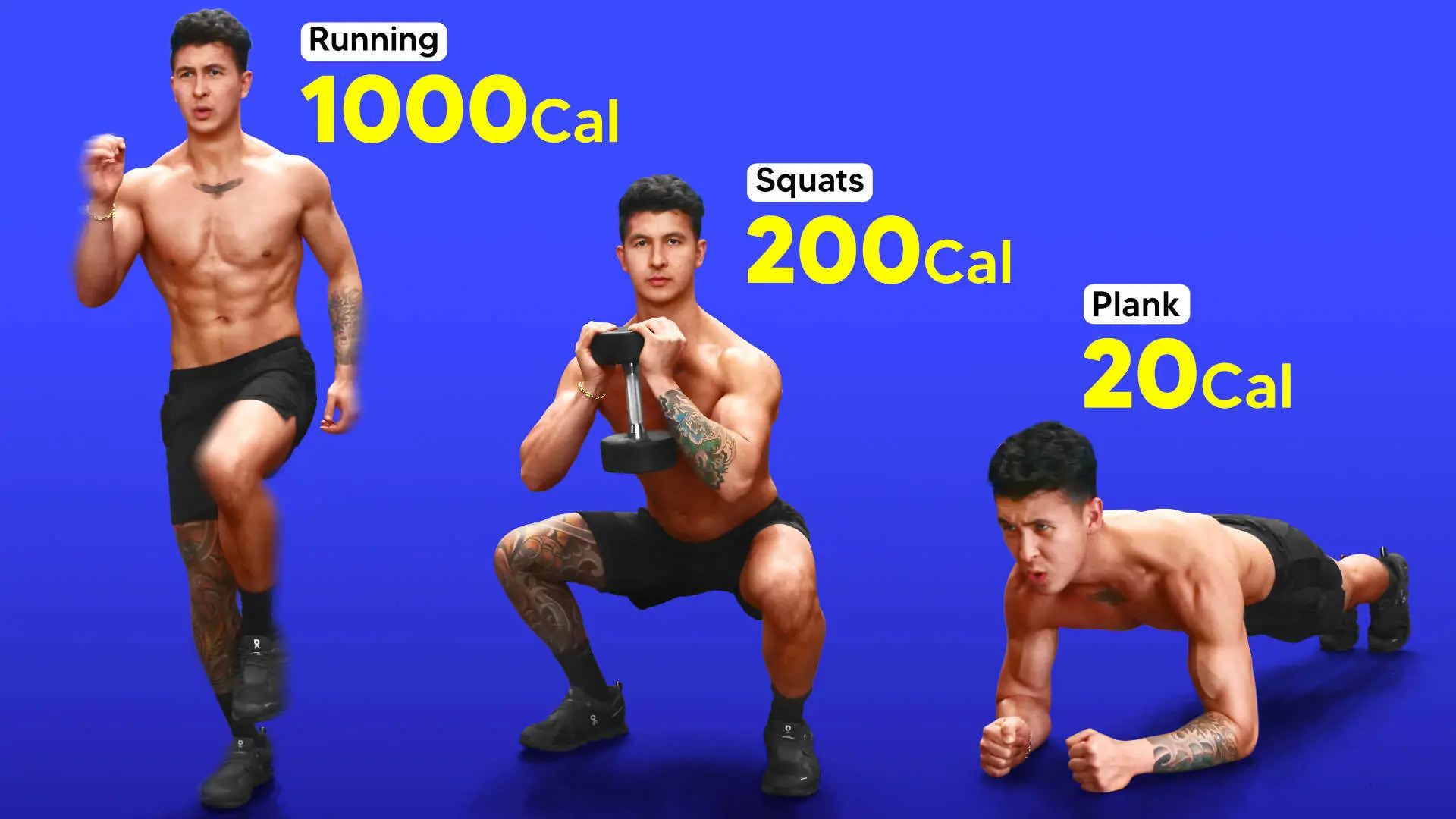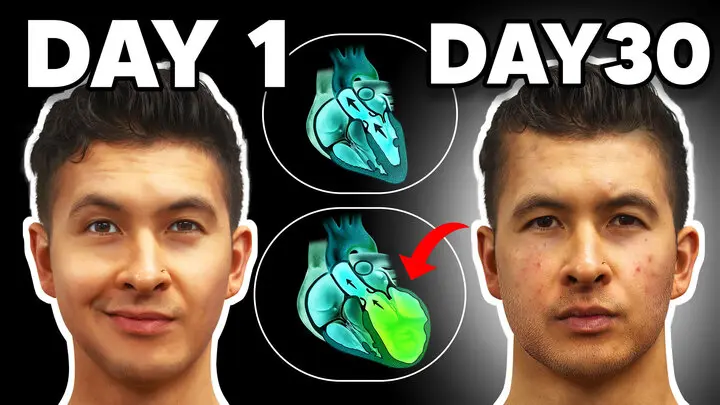3 Sneaky Gain Killers (Likely In Your Workout Routine)
Not seeing the muscle growth you thought you would after months (or years) of hard work? There are 3 mistakes you may be making with your workout routine.
How many workout routines have you tried? 1? 5? 10? More? No matter how many you've cycled through, though, are you left dissatisfied - over and over again - with the lack of resulting muscle growth? Well, listen up. In this article, I'm going to show you 3 lifting mistakes (i.e. 'gain killers') that you're likely committing in your workout routine. And how to fix each one.
Want to avoid these problems - right from the very start? Of course, you do. And you’re going to do just that with the programs I’ve created. Every one of them has been designed specifically to help you set up every single one of your workouts for optimal muscle growth, so you experience the quickest growth possible. If you’re interested:
Click the button below to take my analysis quiz to discover the best program for you:
↓
#1 - No Plan Of Attack (HADD)
You’ve likely heard of ADD. Well, gain killer mistake #1 you're likely making in your workout routine is called “HADD”. That's short for “Hypertrophic Attention Deficit Disorder.” People who have “HADD” switch up their exercises too often and have no long-term focus. But wait. Why is long-term focus so important? Because people who do the same, boring exercises, over and over, do them well - and get stronger on them - simply build more muscle than those who 'switch it up' for whatever reason.
For instance, it's Monday, your chest day. You pop up your phone and find the latest “best chest workout” routine from your favorite influencer. Looks good, and you decide to follow that. Next week, your buddy also happens to be at the gym and is also training chest. So you hop in his workout. Does this sound familiar?
Well, here's the truth. If you're serious about:
- Maximizing muscle growth AND
- Actually seeing results from your workout routine
... Then you're going to need to go into every one of your workouts with a game plan written out. Instead of simply following a random workout every week! You'll need to account for specifics, like:
- How many sets
- Amount of reps and weight
... You're going to do to try to 'beat' your last workout. Otherwise, how would you know if you're actually making progress with your workouts? How would you know if you're getting stronger - instead of just "getting a good pump"? Spoiler alert: you wouldn't know (and you're not making progress!)
See Better Muscle Growth By Progressively Overloading On The Same Exercises
To illustrate this, a 2019 study had participants perform an 8-week resistance training program using either:
- A structured exercise program OR
- Having the exercises randomly decided every session by an app
Although the differences between groups did not yet reach statistical significance, the structured group:
- Had almost twice as much muscle growth
- A greater increase in back squat and bench press strength AND
- A slight decline in body fat%
What this shows is that had this study been carried out longer or had more subjects, there likely would have been a clear advantage to the structured program.
The reason for this is pretty straightforward. It’s well-known that new exercises cause the most muscle damage. After a while, though, you adapt and less damage occurs. So yes, you may feel a lot more soreness from these “random workouts”. But they actually don’t provide as much growth as sticking to the same set exercises and focusing on progressing those with more weight and/or reps over time.
In fact, research shows that early on, much of the increase in protein synthesis response that you get from training is directed toward repairing your muscles. Instead of building them - simply because of the excessive muscle damage it experiences from the novel exercises. Your body is only able to attenuate the muscle damage - and 'focus' on building new muscle - only after a few weeks into a new workout routine.
Meaning? You'll likely need to do an exercise consistently for at least 2-3 weeks before you can start to get the best growth possible out of it.
Hold As Many Variables In Your Workout Routine Constant As Possible
In addition to this, during your workout, at a minimum, you should be recording the exercise, sets, reps, and weight that you are using. It’s also a good idea to write down your effort on each set. And the settings that you are using on a machine or cable or any modifications you may have made.
This will allow you to control as many variables as possible. In turn, enabling you to more accurately determine if you actually made progress or not during your future workouts. These reference points also serve as a plan of attack for your next workout.
For example, let's say you did bicep curls for an easy 3 sets of 10 reps using 35lbs in each hand. You now know that you’re capable of doing more. So this week, you’ll know that you should at least aim to do 40 or 45 lbs instead of 35 lbs or aim for 1-2 more reps per set. If you didn’t have this information written down, you wouldn’t have an effective plan of attack for your next workout.
Even if you think you’ll remember week after week, I know how easy it is to forget. Especially the minor details, which happen to be what matter the most! It’s why so many people who go to the gym consistently week after week fail to actually progress. So, you know what to do now. Track your progress - and track it properly.
#2 - Doing Junk Volume In Your Workout Routine
Gain Killer 2: “Junk Volume:” Doing more sets than you should do in a single session, rather than doing just enough to maximize growth.
Most people are unaware that you only have a certain amount of productive sets that you can do in a single session. Adding sets above this threshold will not help you gain additional muscle. But, rather, seems to just increase damage and lengthen your recovery. Hence, the term “junk volume”.
Picture this: on a chest day, you perform 4 sets of bench press, 4 sets of chest press, 4 sets of dumbbell press, 4 sets of chest dips, and then 4 sets of flyes. By the time you make it to the flyes... Your chest will be exhausted, weak, and experiencing much less tension than it was earlier on in your workout.
By this point, you’ve likely reached and surpassed your productive limit for that session. And all you’re doing now is getting a half-decent pump at the expense of prolonging your recovery.
Don't Exceed 10 Sets Per Muscle Per Workout For Optimal Growth
So, how do you know your limit? Well, just like the total weekly training volume, it’s very individual. Some can handle more and still grow. Whereas others can’t. Regardless. Based on the current evidence, and an analysis done by researcher James Krieger, as long as your sets are being performed to or near failure, it seems that the limit is around 10 sets per muscle per workout.
Once again, this is highly variable. But does suggest that if you greatly exceed this theoretical limit by regularly doing 15-20+ sets for a muscle group in one session, then you are probably doing more harm than good. This is especially true if you just haven’t been progressing very well despite all of this volume.
A practical solution is to distribute that volume into more than one session per week. Instead of doing 18 sets of chest exercises in a single workout (no matter how good they are), split it up and do 9 sets in one workout and 9 sets in another. Or, if you wanted to train your upper body three times a week, split up the 18 sets into 6 sets during each of these three workouts.
You can imagine just how much better quality those 6 sets would be, and the increased amount of weight and reps you’d be able to lift for those sets, rather than by trying to do them all in one workout.
Not quite sure how you're going to distribute your volume in your workout routine for optimal muscle gain? Don't worry. We'll take care of that headache when you sign up for our 3-on-1 coaching program. You'll have a coach who'll focus solely on your training and making sure that all your workouts customized to you, your goals, and the equipment you have available. A dietitian and I will also be available to guide you every step of the way. If that sounds good to you, then:
Click the button below to find out more about the 3-on-1 coaching program:
↓
#3 - Programming Redundant Exercises Into Your Workout Routine
Gain killer #3; redundant exercises. This is a continuation of our previous workout routine mistake. If you only have a certain number of productive sets you can do per workout, then you want to make sure you're getting the most 'bang for your buck' out of these sets. Most people see no results from working out - simply because they choose exercises that do pretty much the exact same thing for their workout routine, only with different names.
For example, take these two sample chest workouts. In workout A, you do 3 sets of:
- Bench press
- Flat dumbbell press AND
- Flat machine press
In workout B you do 3 sets of:
- Bench press
- Incline dumbbell press
- Cable fly
Which one do you think would be a better use of 9 sets? Well, take a closer look at workout A again. You're actually performing pretty much the same exercise for all 9 sets! Whereas in workout B, you’re working several different parts of the chest with exercises that have varied angles and different resistance profiles.
So for the same amount of work, you’d be able to provide much more stimulus to your chest with workout B. And, as a result, get a more massive chest out of those 9 sets.
The same goes for an arm workout for example. Doing 3 sets of a barbell curl, then 3 sets of a dumbbell curl, then 3 sets of a standing cable curl will all provide a very similar stimulus - and target the same area of your biceps.
Whereas 3 sets of a preacher curl, 3 sets of an incline dumbbell curl, and 3 sets of a hammer curl instead would enable you to target different regions of your biceps. And, hence, provide a greater overall stimulus for the same amount of sets.
Meaning? You'll have to think carefully about the chosen exercises you're using for each muscle for your overall workout routine. A good question to ask yourself is this: "Am I essentially performing the same exercise over and over again in my workouts, only with different names?"
If so, then consider swapping some of them for other exercises that are biomechanically different and challenge the muscle at different angles and ranges of motion. By doing so, you’ll be able to get more stimulus and more gains for the same amount of work.
Avoid These Sneaky Gain Killers; Build More Muscle With Your Workout Routine
So, what is the most effective workout routine around? Well... The truth is that there isn't a single best routine available. But if I had a piece of advice to give, it'd be this. Overall, if you’re going to spend time and effort doing your workouts, then it would be in your best interest to ensure that you’re getting the most out of it. What I went through in this article are just a few ways you can do just that.
But for a complete, step-by-step science-based program that shows you exactly how to train and how to eat week after week such that with the effort you put in, you’re maximizing the gains you make and fat you lose, then:
Click the button below to take my analysis quiz to discover the best program for you:
↓



